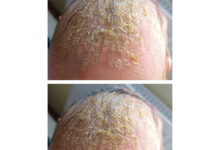Orphaned, hairless and afraid, Now this black bear is unrecognizable
In December 2024, a heartbreaking discovery was made in El Dorado County, California—a young black bear cub, orphaned, malnourished, nearly hairless, and teetering on the edge of survival. The team at Gold Country Wildlife Rescue (GCWR) in North Auburn, seasoned in difficult rescues, was shaken by the bear’s fragile state. He was dehydrated, anemic, and suffering from a severe skin infection. Cowering in his crate, the cub seemed more like a shadow of a bear than a living creature.
Chelsea Engberg, GCWR’s outreach manager, described the moment as gut-wrenching. The bear was barely 20 pounds and had clearly been fighting to survive alone for far too long. Rescuers quickly created a detailed treatment plan, understanding that recovery would be long and uncertain. But they refused to give up.
Weeks passed, and the first signs of hope emerged—fuzz began to grow on the cub’s bare face. It was a small milestone, but to the team, it was everything. With patience and care, they watched him evolve from a sick, frightened creature into a playful cub rediscovering life. He splashed in a kiddie pool, bounced in a firehose hammock, and stayed safely distant from humans to preserve his wild instincts.
By February 2025, the transformation was astonishing. The once-sick cub now looked strong and healthy. Though his future was still under review by the California Department of Fish and Wildlife, the GCWR team was filled with pride. They’d watched him come back from the brink—and not just survive, but thrive.
Then on May 13th, GCWR shared an emotional update. The cub would not return to the wild. Instead, he would be transferred to a lifelong sanctuary—safe, protected, and loved. Alongside the update was a photo of the bear, nearly unrecognizable, his fur thick and glossy, his eyes alert and full of life.
“This little guy came to us with barely any fur, scared and sick,” the post read. “He’ll soon receive his final check-up and vaccines before heading to his forever home. Stay tuned.”
Dana Fasolette, GCWR’s Director of Animal Care, called the journey a powerful reminder of the impact of compassion and teamwork in wildlife rehabilitation. From despair to recovery, the bear’s story is a triumph of resilience and care. And though he won’t return to the wild, his future is now filled with hope, safety, and the dignity every living creature deserves.

